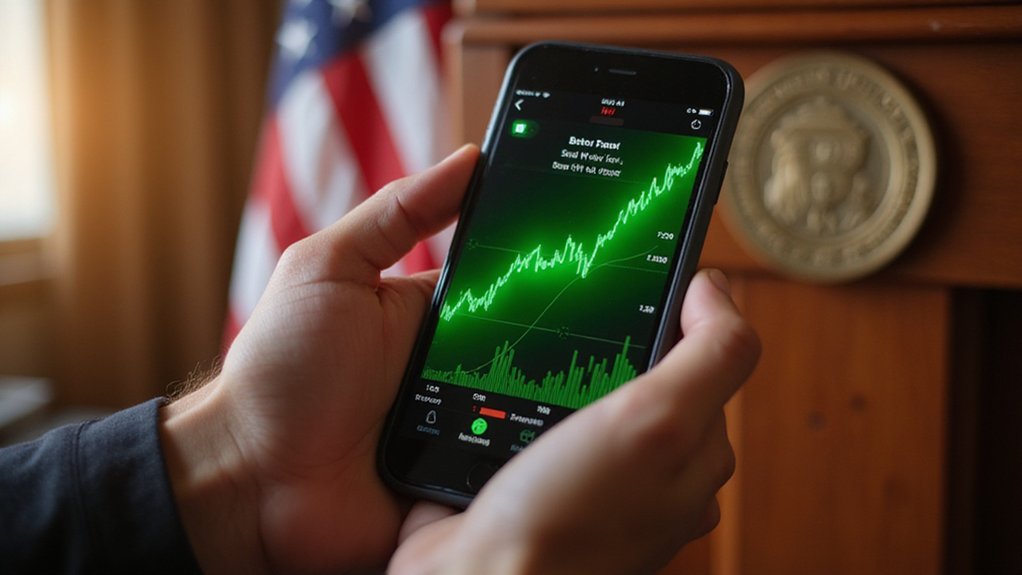The cryptocurrency mining sector has delivered a masterclass in volatility-driven wealth creation during 2025, with publicly traded miners experiencing stock surges that would make even the most seasoned momentum traders pause in bewilderment. Core Scientific’s astronomical 320% year-to-date climb exemplifies this phenomenon, catapulting the company into the coveted top position within the Amplify Transformational Data Sharing ETF (BLOK)—a development that speaks volumes about institutional appetite for digital asset exposure through equity proxies.
Crypto miners have orchestrated a spectacular volatility symphony, with Core Scientific’s 320% surge exemplifying institutional hunger for digital asset proxies.
The operational metrics underlying these valuations present a compelling narrative of industrial expansion meeting speculative fervor. MARA Holdings’ record-breaking 282 blocks mined in May 2025 (representing a 38% month-over-month increase) demonstrates the tangible production growth driving investor enthusiasm. Meanwhile, BitFuFu’s 11.3% production surge to 445 BTC in June reinforces the sector’s capacity expansion trajectory, though one might question whether current valuations adequately reflect the inherent cyclicality of mining economics.
What distinguishes today’s mining landscape from previous cycles is the sophisticated approach to operational efficiency and treasury management. BitFuFu’s achievement of 36.2 EH/s hashrate with 728 MW power capacity illustrates the scale required for meaningful market participation, while their improved fleet efficiency of 20.1 J/TH suggests genuine operational optimization rather than mere capacity additions. Some mining companies have begun exploring yield farming strategies to maximize returns from their cryptocurrency holdings beyond traditional mining rewards.
MARA’s strategic decision to operate proprietary mining pools—thereby avoiding external fees and maximizing block reward retention—represents the kind of vertical integration that creates sustainable competitive advantages. The company’s MARA Pool has demonstrated superior block reward luck, outperforming the network average by over 10%.
The treasury strategies employed by these companies reveal a nuanced understanding of Bitcoin’s role as both operational output and strategic reserve asset. MARA’s accumulation of 49,000 BTC positions it as the largest publicly traded holder, while Kango’s “hodl” strategy (retaining all mined Bitcoin without selling) signals unwavering confidence in long-term appreciation potential. BitFuFu’s expanding ecosystem now serves over 623,114 registered users for cloud mining services, demonstrating the democratization of mining participation beyond institutional players.
Such approaches effectively transform mining companies into leveraged Bitcoin plays, amplifying both upside potential and downside risk. Kango’s meteoric rise following its $400 million mining rig investment exemplifies how capital deployment can rapidly alter market perception, even when per-BTC production costs remain elevated.
The company’s 1,541 BTC mined in Q1 2025 validates its aggressive expansion strategy, though investors would be wise to monitor whether operational efficiency improvements can match the pace of stock appreciation.






